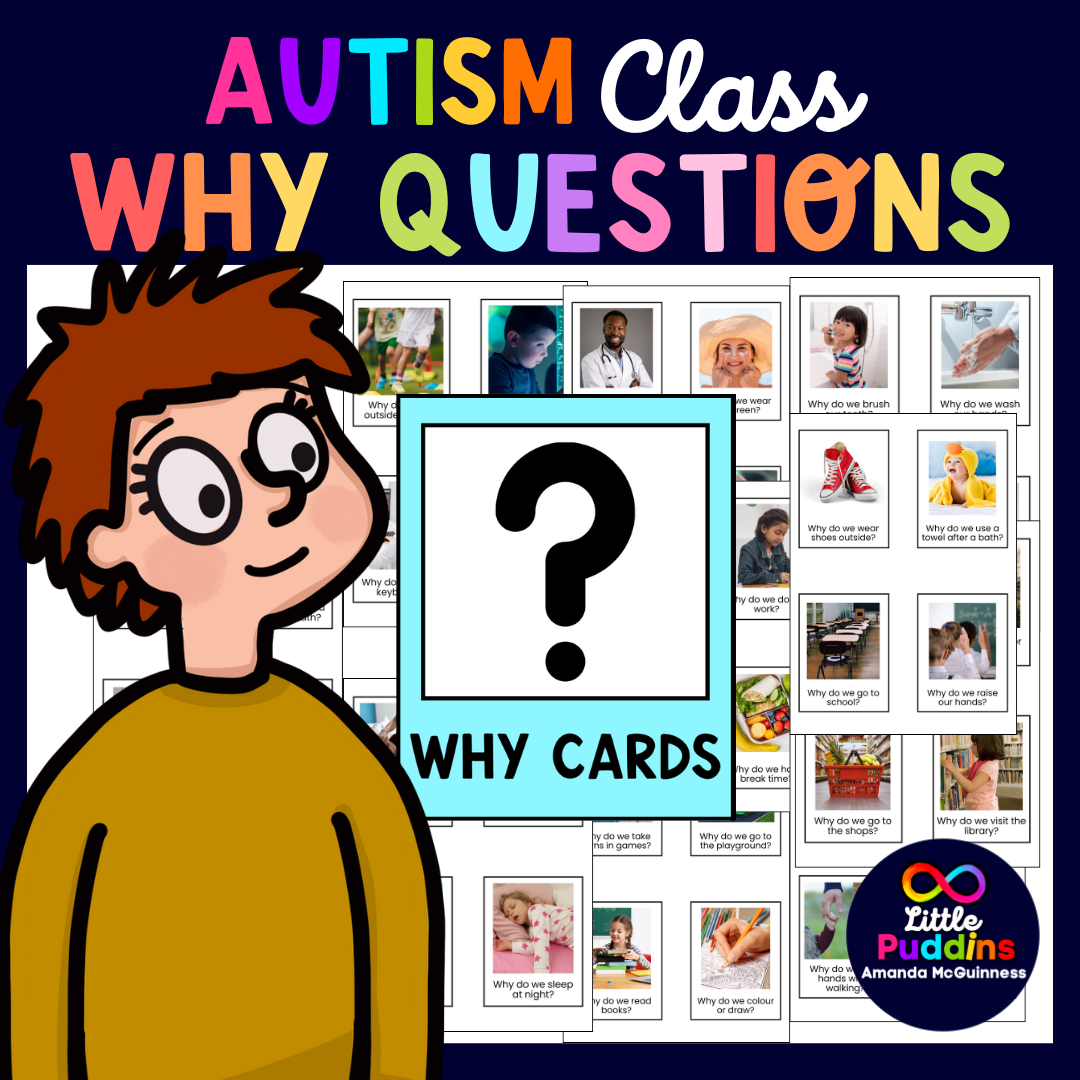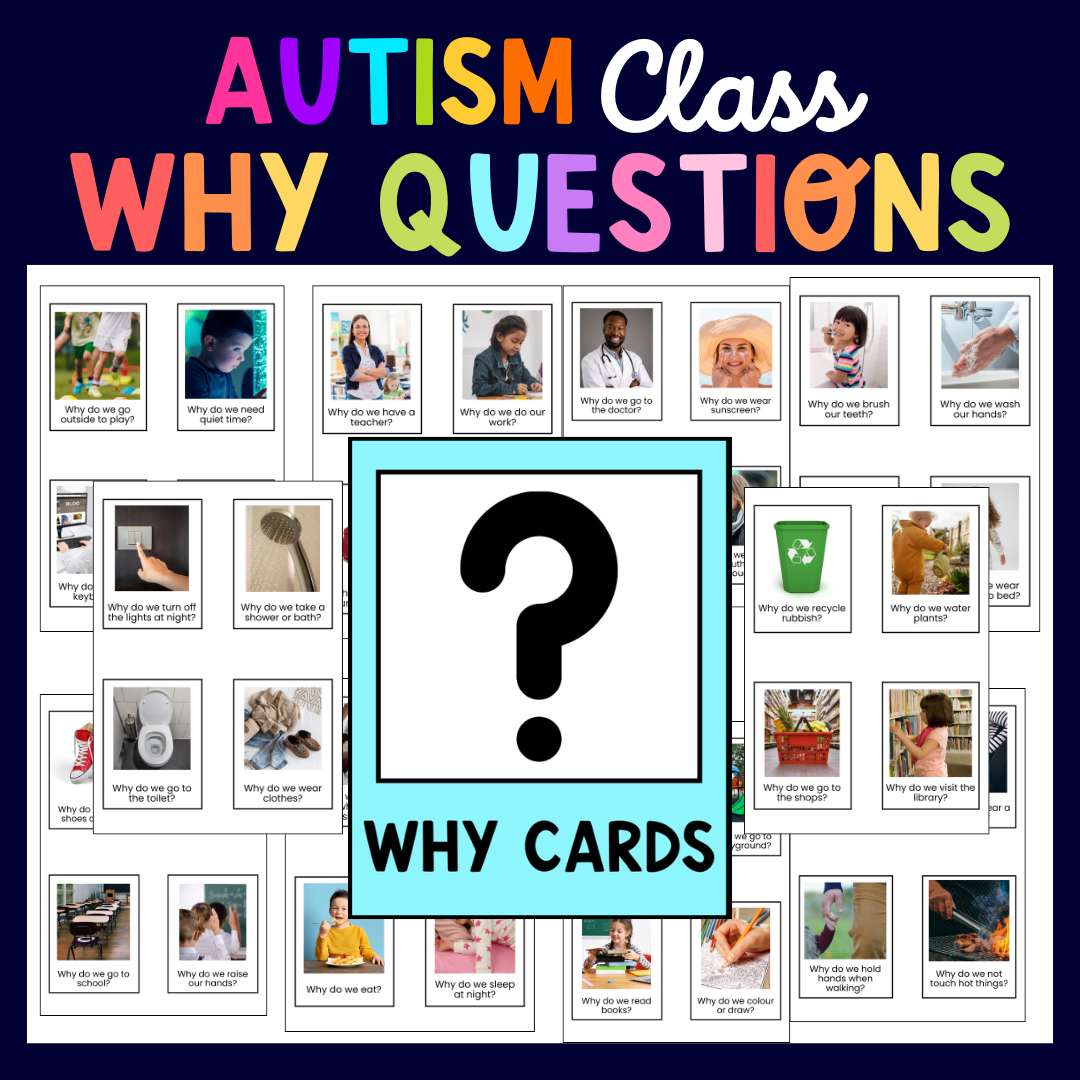Why Question Cards for Autism - Speech Therapy 43 Real-Life Scenario Cards
Why Question Cards for Autism - Speech Therapy 43 Real-Life Scenario Cards
Couldn't load pickup availability
Why Questions Resource – Build Understanding of Everyday Experiences
Created by Amanda McGuinness – Little Puddins
This engaging 43 Scenario Card resource has been thoughtfully created to help Autistic students and learners with speech and language needs develop a deeper understanding of the question “why.”
This is a digital product.
Each card presents a relatable, everyday scenario with a simple “why” question that encourages meaningful discussion, comprehension, and connection. Designed with a neuroaffirmative lens by Amanda McGuinness—Autistic advocate and Autism & Visual Supports Specialist—this set empowers learners to explore reasoning in a supportive, visual way.
What’s Included:
- 43 real-life “why” question scenario cards
- Simple, accessible literal language suitable for Autistic learners
- A variety of familiar topics such as hygiene, school, safety etc
- Visual layout to support communication and comprehension
- Printable format – ideal for laminating and repeated use
- Designed to complement visual supports and AAC systems
Why This Resource Supports Learning:
- Encourages expressive language and reasoning skills
- Helps children understand common cause-and-effect scenarios
- Ideal for neurodivergent learners who benefit from visual and concrete examples
- Can be used in speech therapy sessions, classrooms, or at home
- Created with a neuroaffirmative and strengths-based approach
How to Use:
- Present the “why” card alongside a corresponding image
- Ask the learner to consider the question and respond in their own way
- Use verbal, visual, or AAC-based supports as needed
- Perfect for one-on-one work, group sessions, or independent practice
Terms of Use:
This resource is for individual educator, therapist, or family use.
Do not modify, share, or resell this resource.
Please feel free to share a direct product link if recommending to others.
Full usage terms are included in the guide.
Important Note:
Each Autistic learner has unique communication preferences and needs. This resource offers flexibility to adapt and support individual learning styles in ways that feel respectful and empowering.




